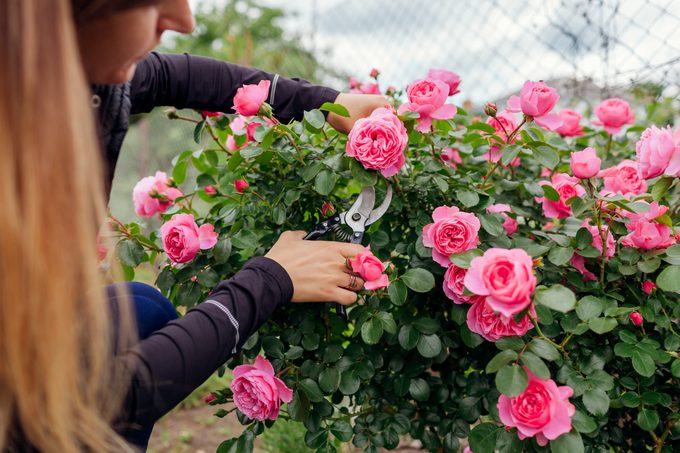Today's modern rose bushes are as easy to grow as any other shrub. Plant them in a good spot and they'll last for years.

How To Grow a Rose Bush

I have several rose bushes in my garden, and I don’t give them any special care. They’re as easy to grow as almost any other shrub.
Why the carefree attitude? Because they’re shrub roses, which aren’t as labor-intensive as older hybrid tea roses. The latter notoriously required pesticides and pampering to keep them disease and insect-free.
On This Page
Types of Rose Bushes
Most rose bushes sold today have been selected for disease resistance, which makes them easier to care for. Some of the most common types include:
- Knock Out Roses: These popular bushes bloom almost continually all summer long without deadheading. You can find blooms in various colors — red, pink, white and even yellow. Depending on the variety, they’re generally hardy in United States Department of Agriculture Plant Hardiness Zones 5 through 11. Most will grow up to three feet tall and wide.
- David Austin Roses: The classic English variety, known for the size of their blooms and disease resistance. Many are hardy in Zones 5 through 11. They will grow to four feet tall and three feet wide.
- Oso Easy Roses: These are usually hardy in Zones 5 through 9. They’re also bred for disease resistance and low maintenance.
How To Plant a Rose Bush
Rose bushes are as easy to plant as any other shrub, although you might want to wear thick leather gloves up to your elbows to avoid scratchy thorns.
According to Teresa Byington, co-host of the Rose Chat Podcast, “Roses, like most blooming shrubs, perform best in full sun [six to eight hours], well-drained soil, and about two inches of water per week, or about the equivalent of a five-gallon bucket. Once established, they can deal with less.”
Planting container-grown rose bushes
Most shrub roses are sold in containers. Plant your rose bush at the same level it grows in the container and apply two to three inches of mulch around the base. Backfill the hole with the same soil you dug out.
Planting dormant rose bushes
In early spring you may find rose bushes sold as dormant plants, with their roots wrapped in peat moss in a plastic bag. Before planting, remove from the bag, shake off the moss and soak the roots in a bucket of water for about 24 hours.
When planting, dig a hole deep enough to accommodate the roots and build up a mound in the center of the hole. Gently spread the roots apart and place them over the mound, then backfill with the same soil you dug out of the hole.
How To Care for a Rose Bush

Care for your rose bush like any other flowering shrub in your garden.
Watering
Keep your rose bush well-watered until it becomes established. As Byington notes, they need about two inches of water per week, but once established they will grow with much less.
Fertilizing
If you’re unsure about of the fertility of your soil, apply a fertilizer labeled for use with roses or other flowers in the spring as they break dormancy.
Pruning
Gardeners frequently ask when and how to prune their rose bushes. Paul Zimmerman of Paul Zimmerman Roses says, “I like to prune in very early spring when the forsythias bloom. That’s nature’s way of telling me the roses are waking up.
“You can tip the roses down by about one-third in fall to prevent winds from beating them up, but leave the heavy pruning until early spring.”
Overwintering
Most shrub roses require little care to overwinter successfully. Provide a good layer of mulch around the rose bushes and remove any leaves that might carry a disease such as black spot. Your roses should be fine when spring arrives.
Handling insect pests and diseases
Fortunately, most shrub roses are bred to resist common rose diseases. In fall, removing leaves that might harbor disease and ensuring your roses are growing well should prevent black spot and other maladies.
Unfortunately, Japanese beetles love to eat many shrub roses. Methods for dealing with Japanese beetles vary from drowning them in a bucket of soapy water to removing the rose bushes.




















